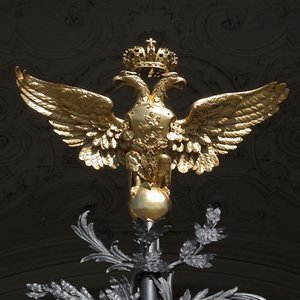The double-headed eagle serves as the Russian coat-of-arms. Where did it originate?
old Slavic symbol of good fortune
2119
it was taken over from the Holy Roman Empire
5681
it was taken over from the Byzantine Empire
10622
After the fall of Constantinople in 1453, Moscow claimed succession to the legacy of the Eastern Roman Empire. Ivan III married Sophia Palaiologina, the niece of the last Byzantine emperor Constantine XI, and made the Byzantine double-headed eagle his own, and eventually Russian, coat-of-arms. In Byzantine heraldry, the heads represent the Emperor having authority over both secular and religious matters.

